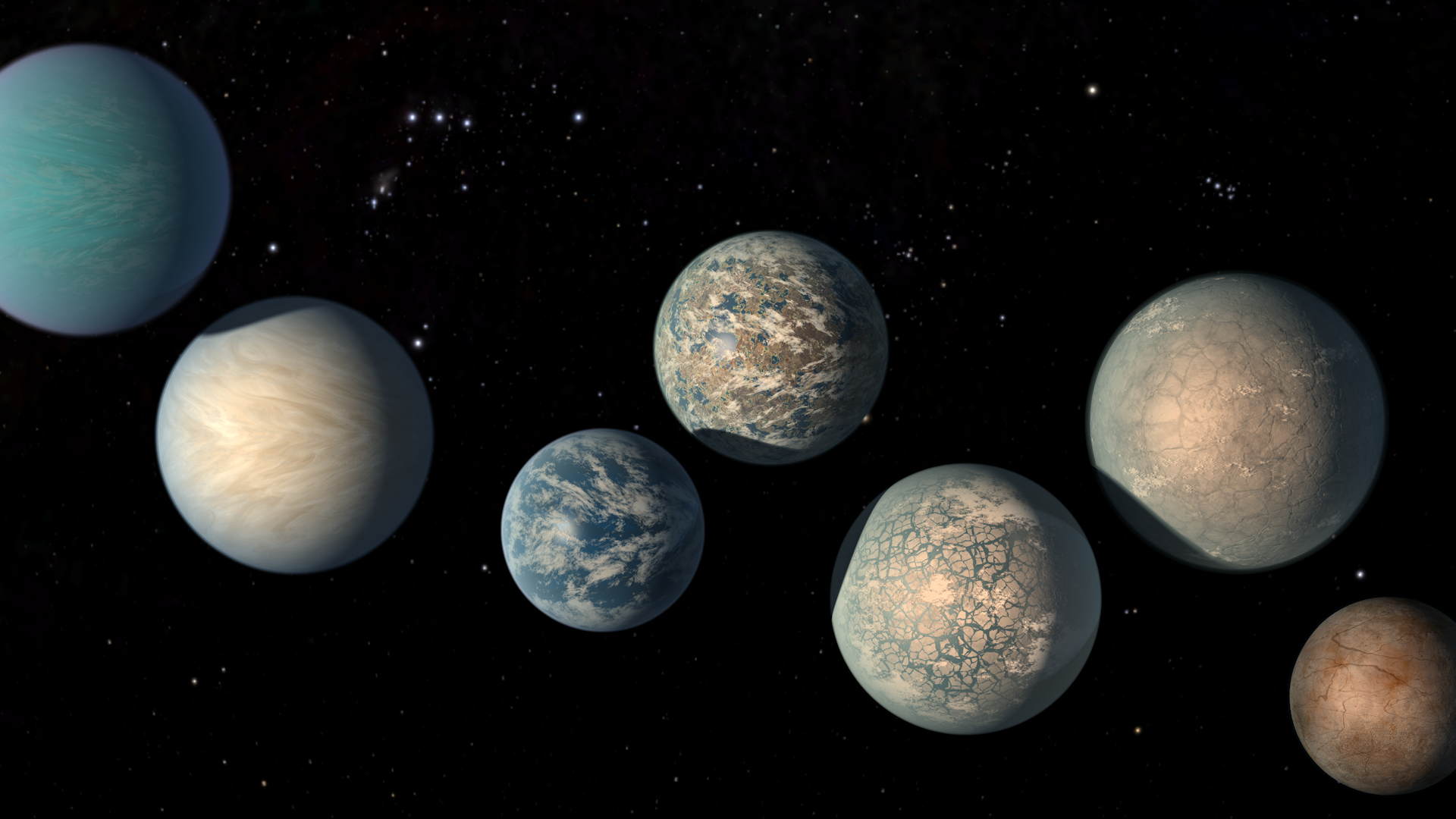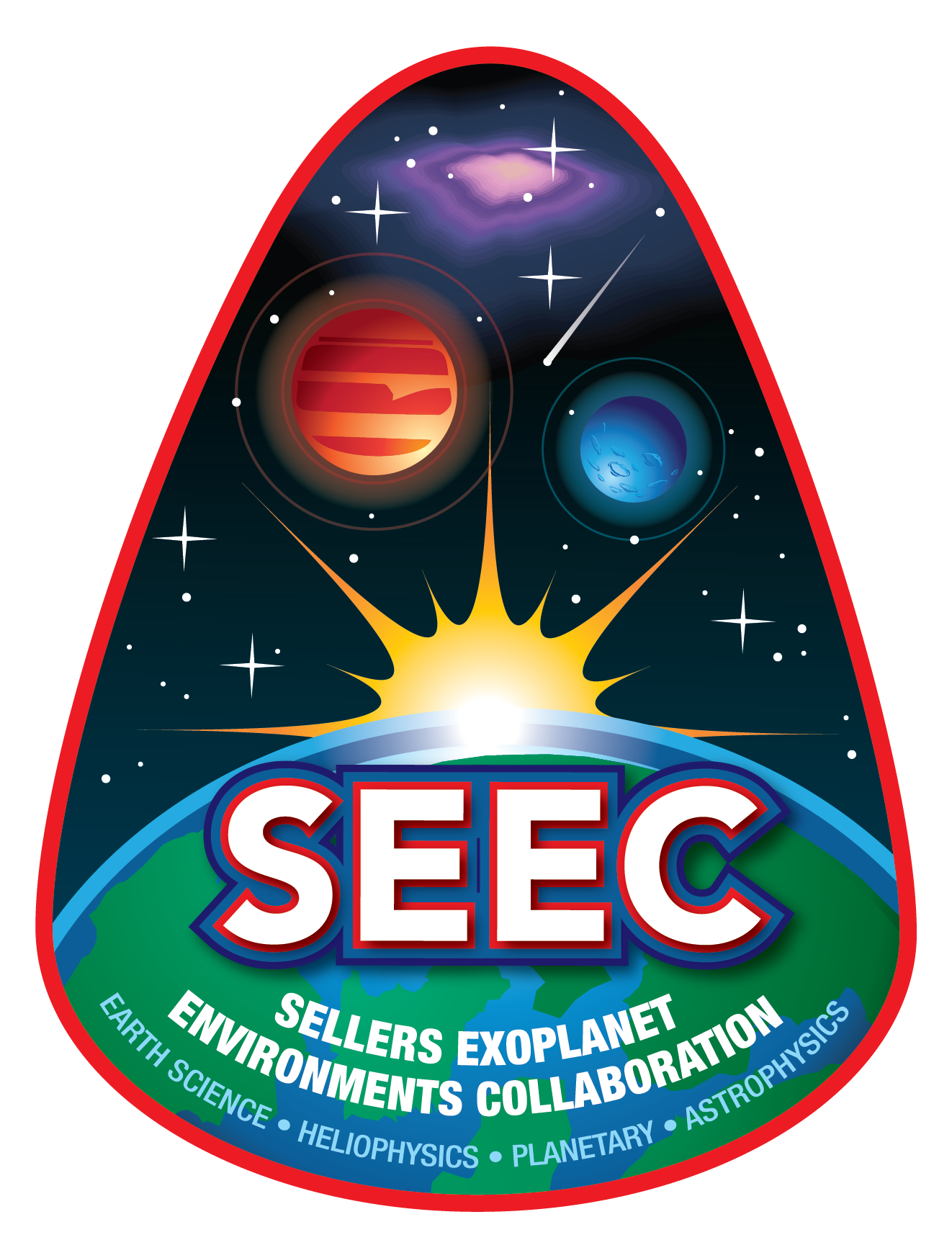Earth’s early days featured a catalog of environmental horrors including vigorous volcanic activity, an atmosphere lacking oxygen and a Sun that blasted our planet with X-ray flares and storms of charged particles more intense than what we see today. All in all, the young Earth doesn’t sound as if it was a particularly hospitable place for the development of life. A better understanding of how life acquired and maintained its toehold on Earth will help prepare scientists for assessing conditions around worlds beyond our solar system, also known as exoplanets. It’s a fitting topic for the Sellers Exoplanet Environments Collaboration (SEEC), a new interdisciplinary collaboration at NASA’s Goddard Space Flight Center in Greenbelt, Maryland, which is exploring how the first molecules needed for life could have developed in such unlikely conditions.
SEEC is hosting its first annual symposium at Goddard April 9–13, which will be available via live webcast. Titled “Environments of Terrestrial Planets Under the Young Sun: Seeds of Biomolecules,” the meeting will bring together researchers from eight countries to discuss how our knowledge of the early days of the solar system can be leveraged to study the environments of other worlds.
Researchers will present what is currently known about the conditions on planets like Earth and Mars under the early Sun, including how solar activity, climate and weather could have affected the development of biomolecules, the precursors of RNA and DNA, which are essential to life as we know it. Attendees will deliberate on how to best shape future research on exoplanet environments. Their conclusions will be submitted to journals for review by the scientific community.

Formed in 2017, SEEC’s initial goals are to produce high-quality, cross-divisional research at Goddard, promote similar work in the larger scientific community and provide outreach by hosting workshops and facilitating collaboration across disciplines.
“Named after our preeminent astronaut and NASA science champion, the late Piers Sellers, SEEC will reveal valuable insights about the diversity of exoplanet atmospheres and climate,” said Colleen Hartman, director of the Sciences and Exploration Directorate at Goddard. “This initiative harnesses Goddard’s ability to combine capabilities from all of our science divisions — astrophysics, heliophysics, Earth sciences and solar system. Pooling our talent and resources gives us a significant advantage in our mission to answer the most pressing questions about our universe. With this collaborative approach, we will continue to blaze trails in scientific exploration and discovery.”
Avi Mandell, a Goddard astrobiologist and SEEC’s director, said these efforts are focused on preparing the tools scientists will need to interpret data from NASA exoplanet missions over the next 10 to 20 years. For example, the James Webb Space Telescope will use spectroscopy, the study of the absorption of light, to discover what molecules are in exoplanet atmospheres by looking at how they absorb light in the infrared.
“Right now, even if we succeeded in measuring a high-quality spectrum of a potentially habitable planet, we would only have the basic building blocks of the tools needed to interpret that spectrum and determine what the data are telling us about the planet,” he said. “The long-term goal from all of SEEC’s work is to be ready with a set of integrated and well-tested tools, institutional knowledge and collaborative relationships so we can dive into this type of research when the data arrive.”
Part of that effort is housed in the Exoplanet Modeling and Analysis Center (EMAC), which is home to community modeling and analysis tools with an accessible web interface. A central hub for codes like this will help improve standardization and efficiency, explained Bill Danchi, a Goddard astrophysicist and deputy director of SEEC.
“EMAC is modeled on the Community Coordinated Modeling Center, which was developed by heliophysicists through NASA and the National Science Foundation,” Danchi said. “Without it, everybody would be spending a lot of time writing their own versions of the same algorithms — reinventing the wheel. With EMAC, users will be able to access tools through a web interface, and users can combine tools and add modules to do their new bit of physics. It’s more efficient. There’s agreement that the code is good, and it’s well tested by users in the community. It will produce numbers that make sense.”
Vladimir Airapetian, a Goddard astrophysicist and a member of the SEEC leadership team, said the goal of the meeting is to hammer out what we have, what we don’t have and what we need to move forward with exoplanet environment studies. The interdisciplinary background of the attendees reflects a crucial aspect of both the symposium and SEEC as a whole.
“Imagine that life is a big elephant in a dark room. You’re just seeing one of the legs, and therefore you call it life,” Airapetian said. “Another guy looks at the trunk and says, this is life. Goddard is the place where trunks and legs unify in three dimensions. That’s the only way to approach it, to bring those people together.
By Jeanette Kazmierczak
NASA’s Goddard Space Flight Center, Greenbelt, Md.
























